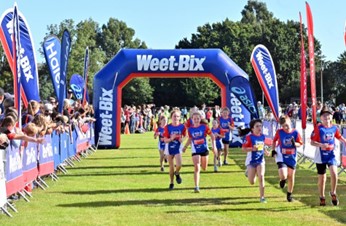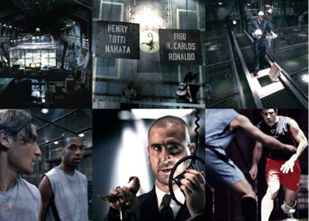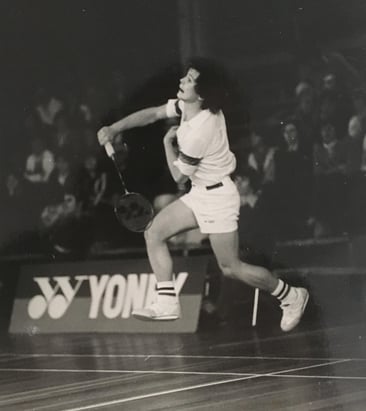.png)
First Published: 07 July, 2022
For those of you who don’t know I’m a sports nut. I used to play top level sport and when it came to doing a Master’s I opted for a Master’s in Business – Sport Management rather than an MBA as I thought case studies on Manchester United, NFL etc. would be more interesting than, say, a launch of a new cat food!
In my studies I came across the central reason why brands can build themselves through sport. The word is BIRGing! This is a word derived from the acronym, BIRG, which stands for — basking in reflective glory. Or the tendency among individuals to associate with people and entities who are successful. The entities could be a team, an organisation or a social group
Many people seek glory from the shine of those who are successful and recognized by all. They relish in the reflected glory of a powerful individual, a celebrated person, a well-recognised institution, a successful sports team, a reputed academic institution, a haloed think-tank or any other elite group.
Have we not seen people wearing T-shirts of a winning IPL cricket team or sharing in social media a picture taken with a celebrity? These are great examples of BIRGing. (Thank you Debashis Barker for the great succinct explanation!)
Fans already have an emotional connection to their sport and are prepared to participate with their sport in many different circumstances. Emotional value has been suggested as being the key to establishing meaningful relationships with customers and hence brand loyalty (Barnes, 203). Smart brands will harness the emotional connection the fan has to their sport and leverage this to further develop their own brand. If brands understand this fundamental concept of why fans support sport, that they want to BiRG, it will open the doors to creating partnerships that work and drive brand growth.
I believe the key to a successful sports partnership is to understand the essence of the brand of the sport/team they are partnering with. In other words what is the emotional connection the fans have with that sport and how does my brand work with this? Just slapping on a logo on a team shirt might create a bit of awareness but it will not gain meaningful results. Great partnerships will not only develop the brand, but the sport they are involved with too. This is what creates authentic connection with the fan.
 Weet-Bix Kids TRYathlon – look what this has done for the sport of triathlon over the years. I am sure the likes of Hamish Carter started here, and he ended up as gold medallist at the Olympic games. This event has become the world’s largest sporting event for kids and helped to ensure Weet-bix remains a staple of many kids’ breakfast.
Weet-Bix Kids TRYathlon – look what this has done for the sport of triathlon over the years. I am sure the likes of Hamish Carter started here, and he ended up as gold medallist at the Olympic games. This event has become the world’s largest sporting event for kids and helped to ensure Weet-bix remains a staple of many kids’ breakfast. And we all know what Nike have done for myriad of sports in developing their brand and the sport. My personal favourite is Nike’s 2002 Scorpion Advert: the greatest tournament that never was. This was the beginning of the mass wave when players moved away from the standard black boots to bold colours, many adorned with Nike’s trademark Swoosh. It was something hammered home during the pre-tournament World Cup advert, with an estimated $100m budget and 24 elite players recruited to captivate the world. This was an amazing success. Whilst being designed solely as an advert to sell their boots, prominently seen in Henry’s winning goal in the original, there is a deeper cultural impact from Nike’s campaign. Most notable is the soundtrack, a remix of Elvis’ A Little Less Conversation by Dutch DJ Junkie XL. The song garnered so much attention from the ad it went to number one in nine countries. Nike also ran several real-life versions of the tournament across the globe, which were partaken in by an estimated two million children. See here →
And we all know what Nike have done for myriad of sports in developing their brand and the sport. My personal favourite is Nike’s 2002 Scorpion Advert: the greatest tournament that never was. This was the beginning of the mass wave when players moved away from the standard black boots to bold colours, many adorned with Nike’s trademark Swoosh. It was something hammered home during the pre-tournament World Cup advert, with an estimated $100m budget and 24 elite players recruited to captivate the world. This was an amazing success. Whilst being designed solely as an advert to sell their boots, prominently seen in Henry’s winning goal in the original, there is a deeper cultural impact from Nike’s campaign. Most notable is the soundtrack, a remix of Elvis’ A Little Less Conversation by Dutch DJ Junkie XL. The song garnered so much attention from the ad it went to number one in nine countries. Nike also ran several real-life versions of the tournament across the globe, which were partaken in by an estimated two million children. See here →So, as a brand marketer, understanding what sport can do for your brand is an imperative. This is why at NZ Marketing Association we created the Game Changer Conference, 11 August 2022. In a global first, the New Zealand Marketing Association is dedicating a conference that exclusively looks at how sport can be used as a medium to drive brand and business growth. Powered by Spark Sport, Game Changer looks at how marketers can use sport more creatively to drive growth for their brands. For brands and businesses, the power of sport is not only clear but growing, particularly in targeting the next generation of consumers. In 2022, it’s predicted that 10% of all global advertising spend will be on sport – and Kantar data states that 74% of consumers feel more loyalty to a brand that’s involved with sport.
As you may know, there has been massive disruption in sport in the area of digital – we have two sessions on this including a fantastic case study from one of our keynote speakers Ridley Plummer on taking the Australian Open into the Metaverse. We have other fabulous speakers including Stu Duguid who is the Business Manager of Naomi Osaka and Nick Kyrios on the topic of athletes as brands – how the game has changed. See here →
This is a great opportunity to find new ways of developing your brand through sport and lets BiRG together on August 11th.
John Miles, CEO of NZ Marketing Association and sports nut!


Contact us if you have any suggestions on resources you would like to see more of, or if you have something you think would benefit our members.
Get in TouchSign up to receive updates on events, training and more from the MA.
